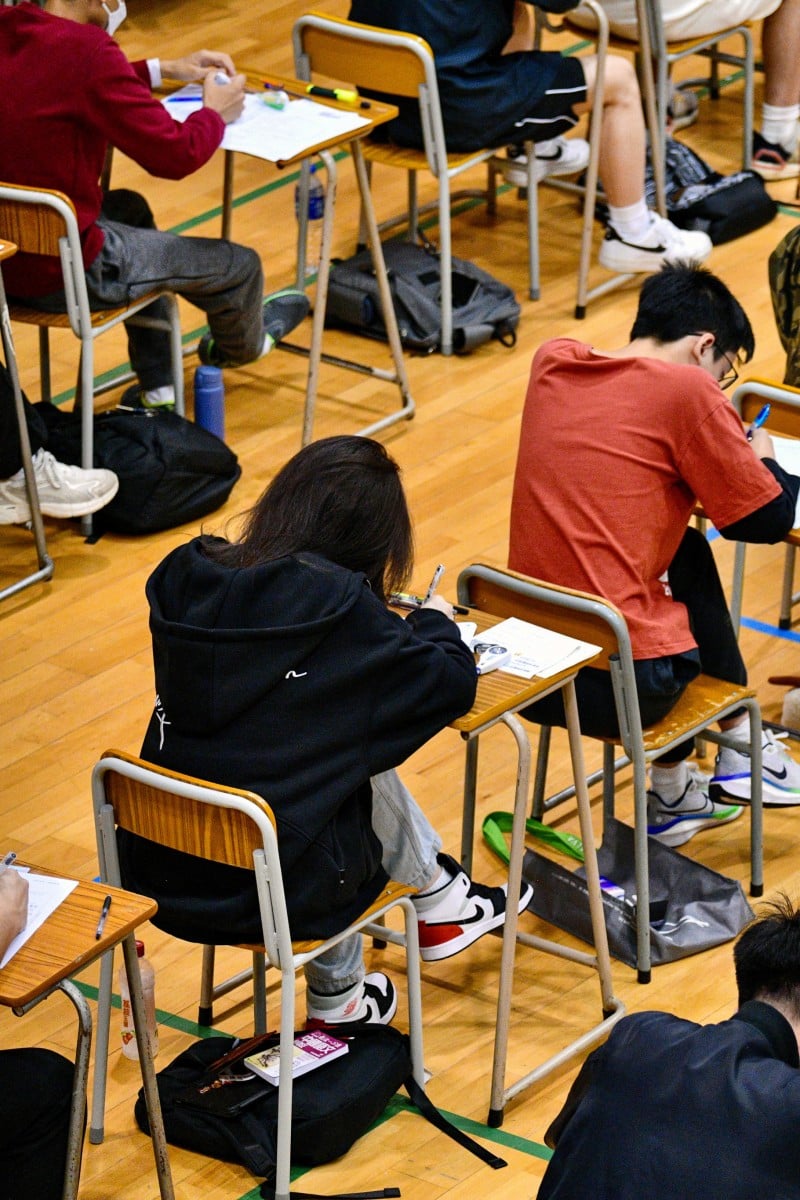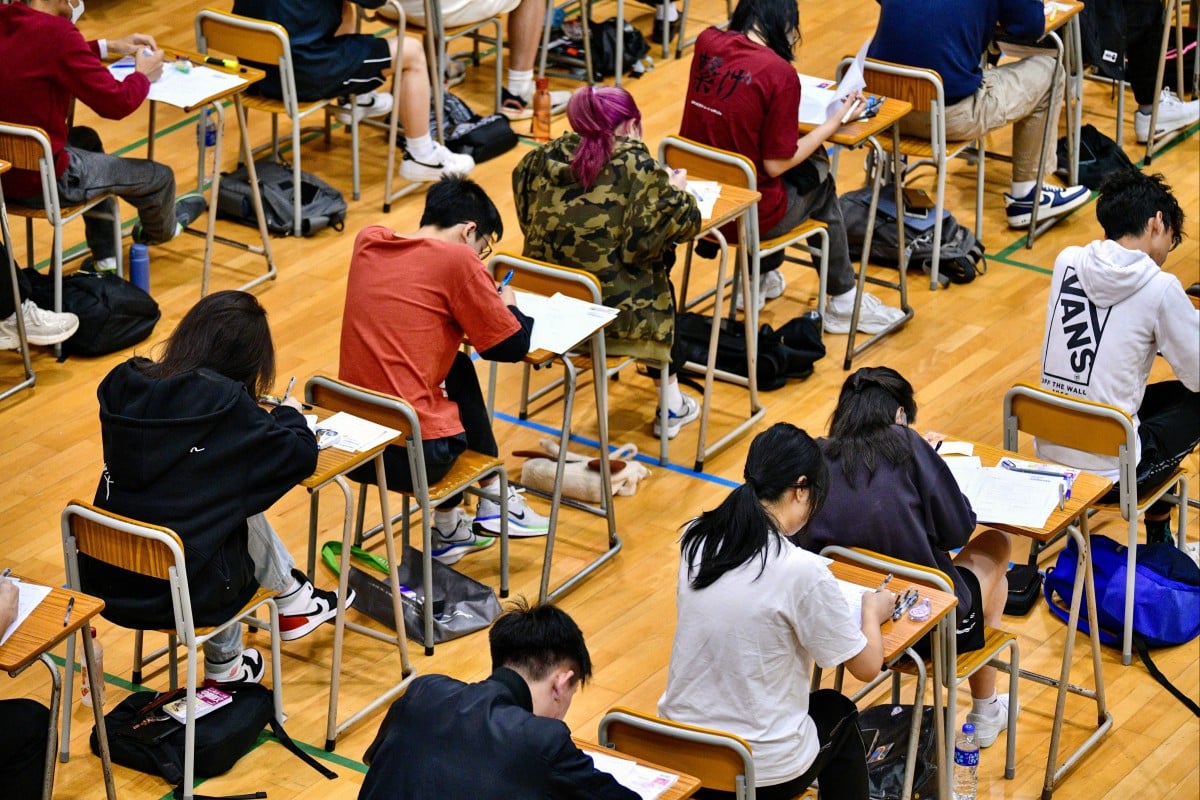
DSE 2024: Mathematics exam ‘noticeably easier’, but students had to pay attention to question wording, says top tutor
- Top tutor Dick Hui says this year’s Paper 2 only had two to three tricky multiple-choice questions, compared to four on last year’s assessment
- He notes that candidates had to read keywords carefully to identify concepts being assessed and solve questions efficiently
 Hong Kong’s Diploma of Secondary Education exams will end on May 4. Photo: Handout
Hong Kong’s Diploma of Secondary Education exams will end on May 4. Photo: HandoutThis year’s Hong Kong Diploma of Secondary Education (DSE) mathematics exam was “noticeably easier” compared to last year’s assessment, though it had questions that required students to carefully comprehend the wording, a top tutor noted.
While the difficulty level of this year’s exam was lower, tutor Dick Hui – who took the assessment with students on Monday – expected a higher cut-off point for 5**.
More than 47,000 candidates sat for the mathematics exam. The DSE examinations will end on May 4, with results scheduled to be released on July 17.
DSE 2024: Don’t make assumptions on the Maths exam, top tutor warns
Hui noted that this year’s Paper 2 saw only two to three tricky multiple-choice questions, as compared to last year’s assessment which contained at least four unusually difficult questions.
He pointed out two challenging questions in Paper 2: Questions 17 and 21, which were related to shapes.
Hui explained that Question 17 involved proportional relationships in triangles and required students to add lines on their own.
“Question 21 tests the properties of geometry. If students can identify that certain options are incorrect – since this question has three options – they can quickly arrive at the correct answer,” he said.
Hui added that the answers for Question 17 and Question 21 were C and B, respectively.
Louisa Hernandez from Kiangsu Chekiang College said this year’s exam was “quite challenging”, adding that the wording of some questions in Paper 2 had caught her off guard.
“There was one specific question that asked about the ‘centroid’ and ‘orthocentre’ of a triangle, and I was unsure because I had never encountered those words in a question before,” the 17-year-old said, adding that she was not confident about her performance on this year’s exam and expected to get a passing grade.
“In the past papers I’ve done, it was uncommon to see those words in a question. Usually, the instructions for shapes were more straightforward, using basic terms like ‘centre’ or ‘angle’.”
DSE 2024: English reading paper causes trouble for students
According to Hui, it was especially important to carefully read how questions were worded on Paper 1.
In Question 13, Hui said students needed to pay close attention to the keywords, such as “frustum”, “pyramid” and “area”.
“This year’s exam tests candidates’ ability to identify the concepts being assessed. If they fail to recognise these concepts, it doesn’t mean they cannot solve the questions, but it may take longer using lengthier methods,” he said.
Taking Question 18 as an example, which focuses on 3D geometry, the tutor noted that if students realised they could use the volume of the tetrahedron to calculate the distance, they would find the question easier to solve.
“The exam tests students on their ability to use previous answers to calculate the next question, understand coordinate relationships, and identify relevant information related to the questions even if it’s not explicitly mentioned,” he added.
DSE 2024: Hot topics for this year’s History exam
Hui said another problem on Paper 1 that required more attention was Part C in Question 11, which was about interquartile range: “Since this is a three-point question, candidates should explain why that is the largest value. Some candidates probably missed those details.”
The final question on Paper 1, Question 19, incorporated a mix of topics, such as completing the square, transformations, coordinate geometry, as well as arithmetic and geometric sequences (ASGS).
Hui explained that this mix of topics made it easier for students: “The difficulty level is not particularly high because each part is not explored in great depth.”
